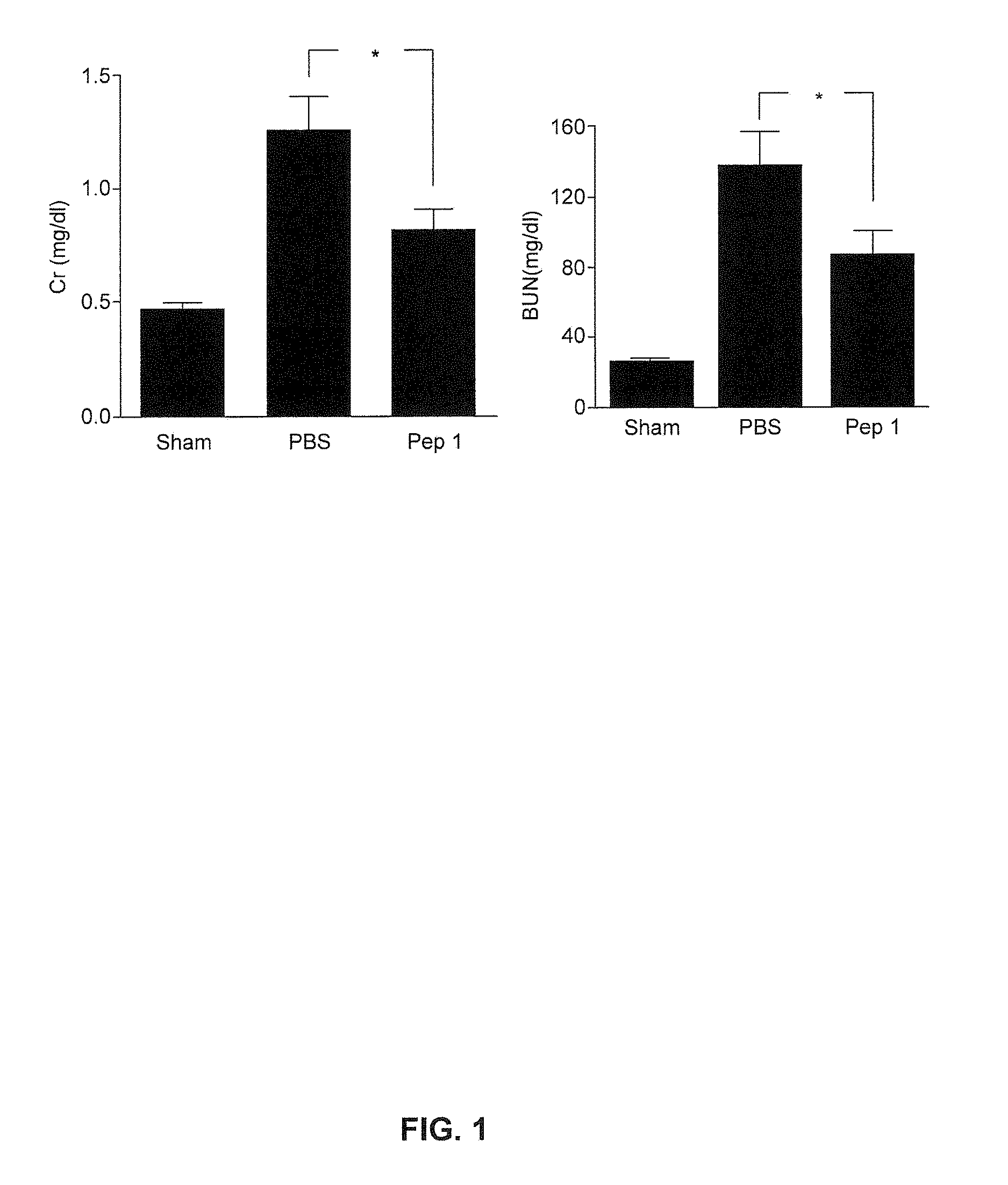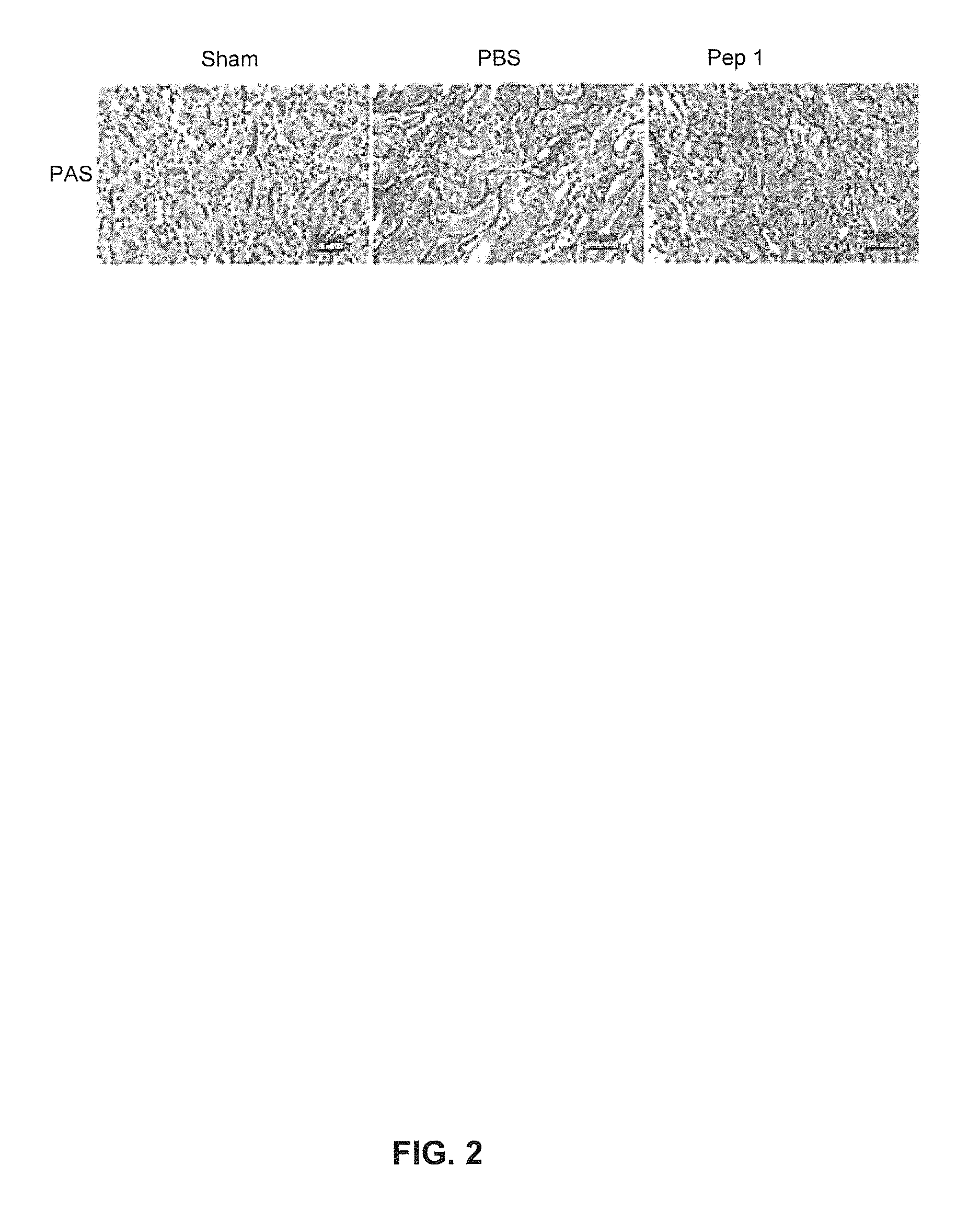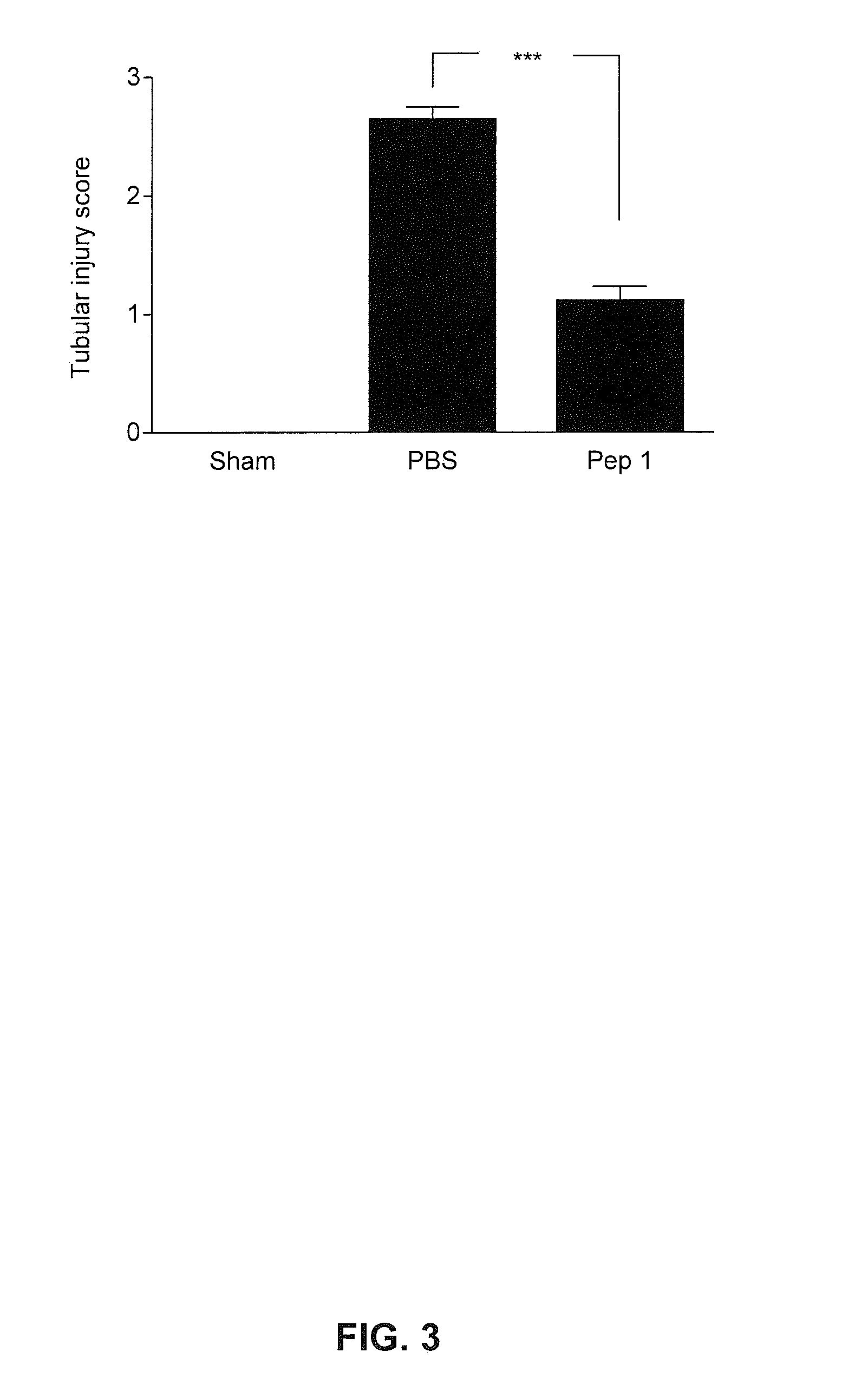Composition for Organ, Tissue, or Cell Transplantation, Kit, and Transplantation Method
a technology for organs and tissues, applied in the direction of peptide/protein ingredients, peptide sources, transferases, etc., can solve the problems of ischemic tissue injury, delay in the recovery of renal function, and various transplantations, so as to promote and strengthen the survivability and/or functions
- Summary
- Abstract
- Description
- Claims
- Application Information
AI Technical Summary
Benefits of technology
Problems solved by technology
Method used
Image
Examples
example 1
Synthesis of Peptide
[0095]The peptide of SEQ ID NO: 1 (hereinafter, referred to as “PEP 1”) was prepared according to a conventionally known method of solid phase peptide synthesis. Specifically, the peptide was synthesized by coupling each amino acid from the C-terminus through Fmoc solid phase peptide synthesis (SPPS) using ASP48S (Peptron, Inc., Daejeon, Korea). Peptides in which the first amino acid at the C-terminus is attached to the resin were used as follows:
NH2-Lys(Boc)-2-chloro-Trityl Resin
NH2-Ala-2-chloro-Trityl Resin
NH2-Arg(Pbf)-2-chloro-Trityl Resin
[0096]In all amino acid ingredients used to synthesize the peptide, the N-term was protected with Fmoc, and the residues were protected with Trt, Boc, t-butylester (t-Bu), and 2,2,4,6,7-pentamethyl dihydro-benzofuran-5-sulfonyl (Pbf) that can be removed from an acid. Examples of the amino acids are as follows:
[0097]Fmoc-Ala-OH, Fmoc-Arg(Pbf)-OH, Fmoc-Glu(OtBu)-OH, Fmoc-Pro-OH, Fmoc-Leu-OH, Fmoc-ile-OH, Fmoc-Phe-OH, Fmoc-Ser(t...
example 2
Renal Transplantation
[0104]Kidney IR which may occur in renal transplantation was induced as follows for observing the effect of PEP1.
[0105]A renal JR injury mouse model was obtained by inducing IR by bilateral clamping renal pedicles for 30 minutes and restoring blood flow after 30 minutes by removing the clamps. Experimental groups were divided into three groups, which are an administered group (PEP 1), a control group (PBS: without PEP 1 administration), and a Sham group (no bilateral clamping). PEP 1 was subcutaneously injected at a concentration of 1000 nmol / kg 30 minutes before and 12 hours after the IR induction.
[0106]A C57BL / 6 mouse (8-week-old; Charles River Laboratories, Wilmington, Mass.) was used to induce renal IR injury. The renal pedicles were clamped with vascular forceps to block blood flow, and ischemia was induced for 28 hours in the renal IR injury model, followed by reperfusion.
[0107]The peptide PEP 1 was diluted with PBS to a concentration of 1000 nmol / kg, and ...
experimental example 4
Inhibitory Effect Against Renal Apoptosis
[0111]Renal apoptosis was evaluated by staining renal tissue with TUNEL stain 24 hours after the IR. Renal paraffin sections were stained with TUNEL using a TUNEL staining kit (Roche Applied Science, Indianapolis, Ind., USA).
[0112]As a result, the PEP 1-administered group showed remarkably decreased TUNEL-positive cells, compared with the PBS control group, indicating that PEP 1 inhibits renal tissue apoptosis (refer to FIGS. 4 and 5).
PUM
| Property | Measurement | Unit |
|---|---|---|
| concentration | aaaaa | aaaaa |
| concentration | aaaaa | aaaaa |
| size | aaaaa | aaaaa |
Abstract
Description
Claims
Application Information
 Login to View More
Login to View More - R&D
- Intellectual Property
- Life Sciences
- Materials
- Tech Scout
- Unparalleled Data Quality
- Higher Quality Content
- 60% Fewer Hallucinations
Browse by: Latest US Patents, China's latest patents, Technical Efficacy Thesaurus, Application Domain, Technology Topic, Popular Technical Reports.
© 2025 PatSnap. All rights reserved.Legal|Privacy policy|Modern Slavery Act Transparency Statement|Sitemap|About US| Contact US: help@patsnap.com



